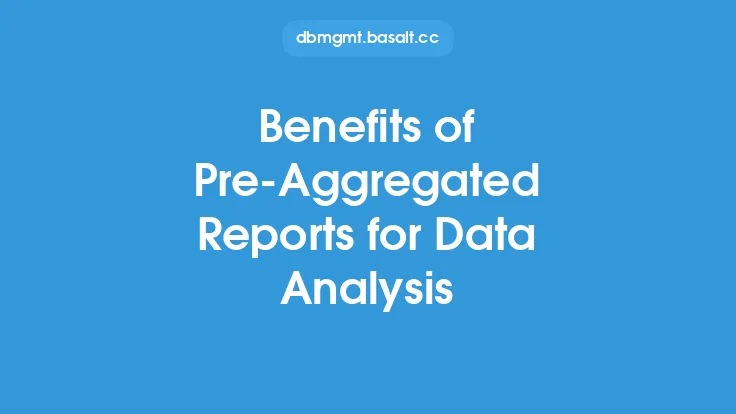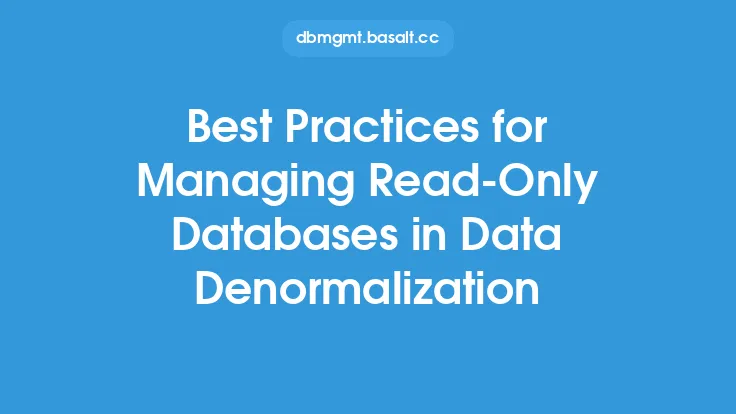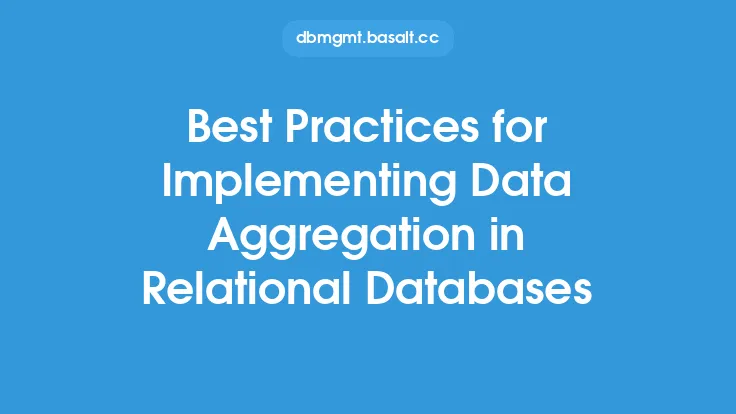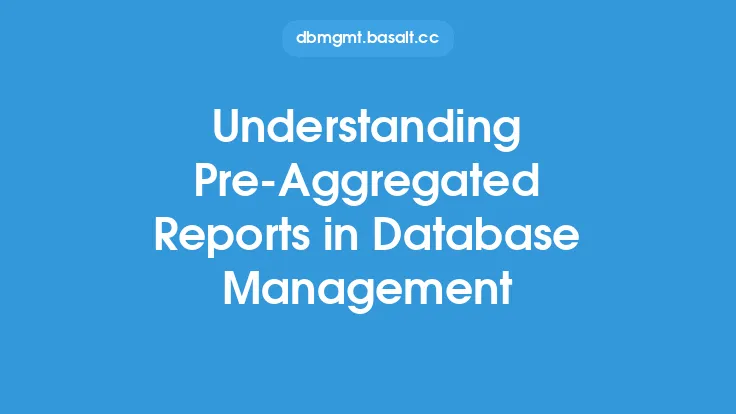Implementing pre-aggregated reports is a crucial aspect of data denormalization, as it enables faster query execution and improved data insights. To achieve this, several best practices must be followed to ensure that pre-aggregated reports are designed and implemented effectively.
Introduction to Pre-Aggregated Reports
Pre-aggregated reports are a type of data summarization technique where data is aggregated and stored in a summary table, reducing the need for complex queries and improving query performance. This technique is particularly useful in data warehousing and business intelligence applications, where fast query execution and data analysis are critical. By pre-aggregating data, users can quickly retrieve summarized data, reducing the load on the database and improving overall system performance.
Designing Pre-Aggregated Reports
Designing pre-aggregated reports requires careful consideration of several factors, including the type of data being aggregated, the level of granularity required, and the frequency of updates. The first step in designing pre-aggregated reports is to identify the key performance indicators (KPIs) that need to be tracked. This involves analyzing the business requirements and identifying the metrics that are most relevant to the organization. Once the KPIs have been identified, the next step is to determine the level of granularity required for each metric. This will depend on the level of detail required for analysis and reporting.
Implementing Pre-Aggregated Reports
Implementing pre-aggregated reports involves creating summary tables that store the aggregated data. This can be done using various techniques, including materialized views, summary tables, and data cubes. Materialized views are a type of database object that stores the result of a query in a physical table, allowing for fast query execution. Summary tables are similar to materialized views but are typically used for more complex aggregations. Data cubes are a type of data structure that stores data in a multidimensional array, allowing for fast querying and analysis.
Maintaining Pre-Aggregated Reports
Maintaining pre-aggregated reports is critical to ensuring that the data remains up-to-date and accurate. This involves updating the summary tables regularly to reflect changes in the underlying data. The frequency of updates will depend on the volatility of the data and the requirements of the business. In some cases, it may be necessary to update the summary tables in real-time, while in other cases, updates may be done on a scheduled basis.
Best Practices for Implementing Pre-Aggregated Reports
To ensure that pre-aggregated reports are implemented effectively, several best practices must be followed. These include:
- Identifying the key performance indicators (KPIs) that need to be tracked
- Determining the level of granularity required for each metric
- Using the appropriate data structure, such as materialized views, summary tables, or data cubes
- Updating the summary tables regularly to reflect changes in the underlying data
- Monitoring query performance and adjusting the pre-aggregated reports as needed
- Ensuring that the pre-aggregated reports are aligned with the business requirements and goals
Common Challenges and Solutions
Implementing pre-aggregated reports can be challenging, and several common issues may arise. These include:
- Data inconsistencies: This can occur when the summary tables are not updated regularly, resulting in inconsistencies between the summary data and the underlying data.
- Query performance: Pre-aggregated reports can improve query performance, but they can also introduce additional complexity, leading to slower query execution.
- Data storage: Pre-aggregated reports require additional storage space, which can be a challenge in large databases.
To overcome these challenges, it is essential to monitor query performance regularly, update the summary tables frequently, and ensure that the pre-aggregated reports are designed and implemented effectively.
Conclusion
Implementing pre-aggregated reports is a critical aspect of data denormalization, as it enables faster query execution and improved data insights. By following best practices, such as identifying KPIs, determining the level of granularity, and using the appropriate data structure, organizations can ensure that their pre-aggregated reports are effective and efficient. Additionally, maintaining pre-aggregated reports and monitoring query performance are crucial to ensuring that the data remains up-to-date and accurate. By implementing pre-aggregated reports effectively, organizations can improve their data analysis and decision-making capabilities, leading to better business outcomes.





